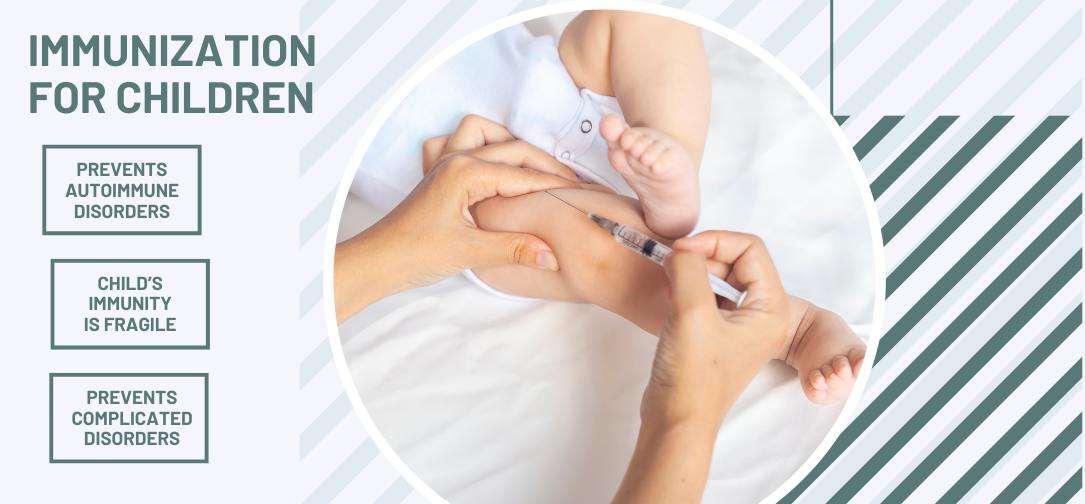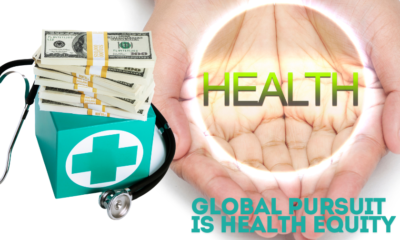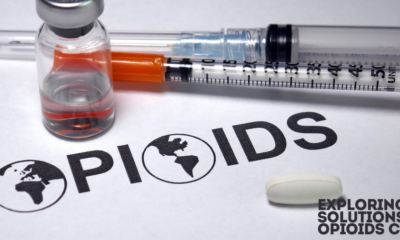Public Health
Immunization Schedules Explained: Ensuring Lifelong Protection for Your Family

Immunization is one of the most critical and effective public health interventions that have dramatically reduced the prevalence of infectious diseases, saving millions of lives each year. Despite the undeniable benefits, understanding immunization schedules can sometimes be overwhelming for parents and caregivers. This comprehensive guide aims to explain immunization schedules, why they are important, and how they ensure lifelong protection for your family.
What is Immunization?
Immunization is a process through which individuals are made immune or resistant to infectious diseases, typically by the administration of a vaccine. Vaccines stimulate the body’s immune system to recognize and fight pathogens like viruses or bacteria, preparing it to respond more effectively in the event of future exposure.
Vaccines contain weakened or inactivated parts of a particular organism (antigen) that trigger an immune response within the body. Newer vaccines contain the blueprint for producing antigens rather than the antigen itself. Regardless of whether the vaccine is made of the antigen itself or a blueprint, this weakened version will not cause the disease in the person receiving the vaccine but will prompt their immune system to respond much as it would have on its first reaction to the actual pathogen.
The Importance of Immunization Schedules
An immunization schedule is a series of vaccines, including the timing of all doses, which may be recommended or required at various ages. Immunization schedules are carefully designed by health authorities such as the World Health Organization (WHO), the Centers for Disease Control and Prevention (CDC), and other national health bodies. They are based on scientific evidence and research to provide the most effective protection against infectious diseases at different stages of life.
Key reasons why immunization schedules are important include:
1) Timely Protection: Vaccines are scheduled at times when individuals, particularly infants and young children, are most vulnerable to specific diseases. Following the recommended schedule ensures that children receive immunity before exposure to potentially life-threatening diseases.
2) Community Immunity (Herd Immunity): When a significant portion of a community is immunized, it helps protect those who cannot be vaccinated, such as individuals with certain medical conditions or weakened immune systems. High vaccination rates reduce the overall amount of the virus or bacteria that can spread in the community.
3) Prevention of Outbreaks: Consistent adherence to immunization schedules helps to prevent outbreaks of vaccine-preventable diseases. History has shown that lapses in vaccination rates can lead to a resurgence of diseases that were previously under control.
4) Avoidance of Severe Complications: Many vaccine-preventable diseases can lead to serious complications, hospitalization, or even death. Immunization helps to avoid these severe outcomes by providing immunity before exposure to the disease.
5) Cost-Effectiveness: Vaccination is a cost-effective public health intervention. It not only saves lives but also reduces healthcare costs associated with treating infectious diseases, including hospitalization, long-term disabilities, and lost productivity.
Components of Immunization Schedules
Immunization schedules are structured according to age groups, starting from infancy through adulthood, and include booster doses when necessary. Let’s break down the common components of an immunization schedule:
1) Infant Immunization (0-12 months):
This is the most intensive period for vaccinations, as infants are most vulnerable during their first year of life. Vaccines administered during this time include:
- Hepatitis B (HepB): The first dose is usually given at birth, with subsequent doses at 1-2 months and 6-18 months. Hepatitis B can cause chronic liver disease and liver cancer, so early protection is crucial.
- Diphtheria, Tetanus, and Pertussis (DTaP): The DTaP vaccine protects against three serious diseases and is given in five doses, starting at 2 months of age. Booster doses are given later in childhood.
- Haemophilus influenzae type b (Hib): This vaccine prevents bacterial meningitis and other severe infections, with doses starting at 2 months of age.
- Polio (IPV): The inactivated poliovirus vaccine is administered to prevent poliomyelitis, a highly contagious viral infection that can lead to paralysis.
- Pneumococcal Conjugate (PCV13): This vaccine protects against pneumococcal diseases, which can cause pneumonia, meningitis, and bloodstream infections.
- Rotavirus (RV): This vaccine protects against rotavirus infections, which are the leading cause of severe diarrhea in infants and young children.
- Measles, Mumps, and Rubella (MMR): Typically administered between 12-15 months, the MMR vaccine protects against three highly contagious viral infections.
2) Toddler and Preschool Immunization (1-4 years):
During the toddler and preschool years, children continue to receive vaccines to complete their protection against various diseases:
- Varicella (Chickenpox): This vaccine protects against chickenpox, a common and highly contagious childhood disease.
- Hepatitis A (HepA): This vaccine protects against hepatitis A, a viral liver disease. It is given as two doses spaced at least six months apart.
- Additional DTaP, Hib, and IPV Doses: Booster doses are given to maintain immunity against these diseases.
- Influenza (Flu): Annual flu vaccines are recommended starting at 6 months of age to protect against seasonal influenza, which can be severe in young children.
3) School-Age Immunization (5-18 years):
As children enter school, they need additional booster doses and vaccines to ensure continued protection:
- Tdap (Tetanus, Diphtheria, Pertussis): A booster shot given at 11-12 years of age to continue protection into adolescence.
- Human Papillomavirus (HPV): The HPV vaccine is recommended for preteens aged 11-12 years and protects against cancers caused by HPV.
- Meningococcal Vaccine (MenACWY): This vaccine protects against meningococcal diseases, including meningitis, and is recommended at 11-12 years with a booster dose at 16 years.
- Influenza (Flu): Annual flu vaccination continues to be important during these years.
4) Adult Immunization (19+ years):
Vaccination does not stop after childhood; adults also need vaccines to maintain immunity and protect against diseases that are more common or severe in adulthood:
- Td or Tdap: A Td (Tetanus, Diphtheria) booster is recommended every 10 years, and one dose of Tdap is recommended for adults who have never received it.
- Shingles (Herpes Zoster): Recommended for adults over 50 to protect against shingles and its complications.
- Pneumococcal Vaccines (PPSV23 and PCV13): Recommended for adults over 65 and younger adults with certain health conditions
- Influenza (Flu): Annual flu vaccinations remain essential for all adults, especially those with underlying health conditions.
- Other Vaccines: Depending on lifestyle, travel, health conditions, or occupational risk, adults may need additional vaccines such as hepatitis A, hepatitis B, meningococcal, and others.
5) Special Circumstances and Catch-Up Schedules:
Not everyone follows the standard schedule, and there are provisions for catch-up schedules to ensure those who missed vaccines can still be protected. Special circumstances such as travel, pregnancy, or specific health conditions may require adjustments to the standard immunization schedule.

Understanding Booster Doses and Their Importance
Booster doses are additional doses of a vaccine given after the initial series. They are necessary because the immunity provided by some vaccines can wane over time. Boosters help “remind” the immune system about the pathogen, ensuring continued protection.
For example:
- DTaP/Tdap: Boosters are needed because immunity to pertussis (whooping cough) and diphtheria wanes over time.
- MMR: A second dose is needed to ensure immunity, as not all individuals respond fully to the first dose.
- Meningococcal Vaccine: Boosters are given during adolescence to provide continued protection through the years when meningococcal disease risk is highest.
Vaccine Safety and Common Concerns
One of the most common concerns among parents is the safety of vaccines. Vaccines are rigorously tested for safety and efficacy before they are approved for use. They continue to be monitored for safety once they are in use. Common side effects are typically mild and include soreness at the injection site, fever, or mild rash. Severe side effects are extremely rare.
The ingredients in vaccines, including preservatives and stabilizers, are present in very small amounts and have been shown to be safe. For example, thimerosal, a preservative once used in many vaccines, has been removed or reduced to trace amounts in all vaccines recommended for children under six years old, with the exception of some flu vaccines.
Despite the extensive safety measures, misinformation about vaccines persists, contributing to vaccine hesitancy. It’s crucial for parents and caregivers to seek information from reliable sources like healthcare providers, the CDC, WHO, and other reputable health organizations.
How to Stay on Track with Immunization Schedules
Keeping track of immunizations can seem daunting, but there are several strategies to help:
1) Use Immunization Tracking Tools: Many countries offer immunization tracking tools or apps that can help you keep up with your family’s vaccination schedules. These tools can provide reminders for upcoming vaccines and keep records of vaccinations received.
2) Schedule Regular Check-Ups: Regular visits to a healthcare provider ensure that you stay on schedule with immunizations and receive timely reminders for upcoming vaccines.
3) Ask Your Healthcare Provider: Don’t hesitate to ask your healthcare provider about any concerns or questions regarding vaccines and schedules. They can provide guidance tailored to your family’s needs.
4) Stay Informed: Keep up with any updates to immunization schedules from reliable sources. Vaccination recommendations can change based on new research or emerging diseases.
5) Plan for Travel: If you plan to travel internationally, especially to countries where vaccine-preventable diseases are more common, consult with your healthcare provider about additional vaccines that may be needed.
The Global Impact of Immunization
Immunization has a profound impact not just on individual families but on global public health. Vaccination programs have led to the eradication of smallpox, the near-elimination of polio, and significant reductions in diseases like measles, tetanus, and whooping cough. By preventing illness, immunization also alleviates the strain on healthcare systems, reduces the economic burden of diseases, and contributes to healthier, more productive communities.
However, the success of immunization programs depends on maintaining high vaccination rates. Declines in vaccination coverage can lead to outbreaks, even in countries where diseases were previously well-controlled. For example, measles outbreaks in various parts of the world, including developed countries, have been linked to drops in vaccination rates due to vaccine hesitancy.
The Future of Immunization
The field of immunization is constantly evolving with advancements in vaccine technology. New vaccines are being developed for diseases that currently have no vaccine, and research is ongoing to improve existing vaccines, making them more effective, easier to administer, and accessible to more people. Innovations such as needle-free vaccines, thermostable vaccines that do not require refrigeration, and combination vaccines that reduce the number of shots are making immunization more efficient and less burdensome.
Furthermore, the COVID-19 pandemic has highlighted the critical role of vaccines in responding to emerging infectious diseases. The rapid development and deployment of COVID-19 vaccines demonstrated the potential of new technologies like mRNA vaccines, which may soon be used for other diseases.
Conclusion
Understanding and adhering to immunization schedules is essential for protecting individuals and communities from infectious diseases. While the number of vaccines and the complexity of schedules can be daunting, the benefits far outweigh any temporary discomfort or inconvenience. Immunization is not just a personal health choice; it is a societal responsibility that contributes to the health and well-being of entire communities.
Parents, caregivers, and individuals play a crucial role in ensuring that vaccination schedules are followed, making informed decisions based on reliable information, and staying proactive in maintaining lifelong protection against preventable diseases. By doing so, we can continue to safeguard our families and future generations from the dangers of infectious diseases, creating a healthier and safer world for all.
-

 Home and Garden6 days ago
Home and Garden6 days agoTransform Your Space: A Guide to Minimalist House Interior Design in 2025
-

 Home & Family7 days ago
Home & Family7 days ago10 Essential Cleaning Hacks for Bathroom Surfaces You Need to Try
-

 Health & Fitness7 days ago
Health & Fitness7 days agoDiscovering the Best Multivitamin for Women Over 40: Essential Nutrients for Optimal Health
-

 Automotive5 days ago
Automotive5 days agoUnlocking Performance: Why the HP Spectre x360 is the Ultimate 2-in-1 Laptop for 2025
-

 Health & Fitness6 days ago
Health & Fitness6 days agoDiscover the Best Multivitamin for Women Over 40: A Comprehensive Guide to Optimal Health
-

 Crime7 days ago
Crime7 days agoExploring the Most Anticipated New True Crime Documentaries of 2025
-

 Business7 days ago
Business7 days agoMaximize Your Earnings with American Express High Yield Savings Accounts in 2025
-

 Education6 days ago
Education6 days agoUnlock Your Potential: Discover the Best Udemy Free Courses of 2025





































